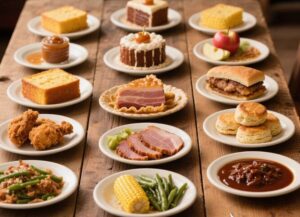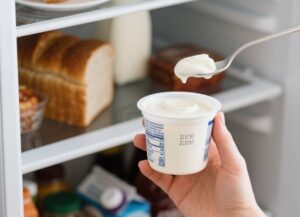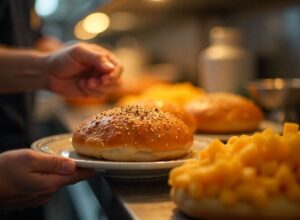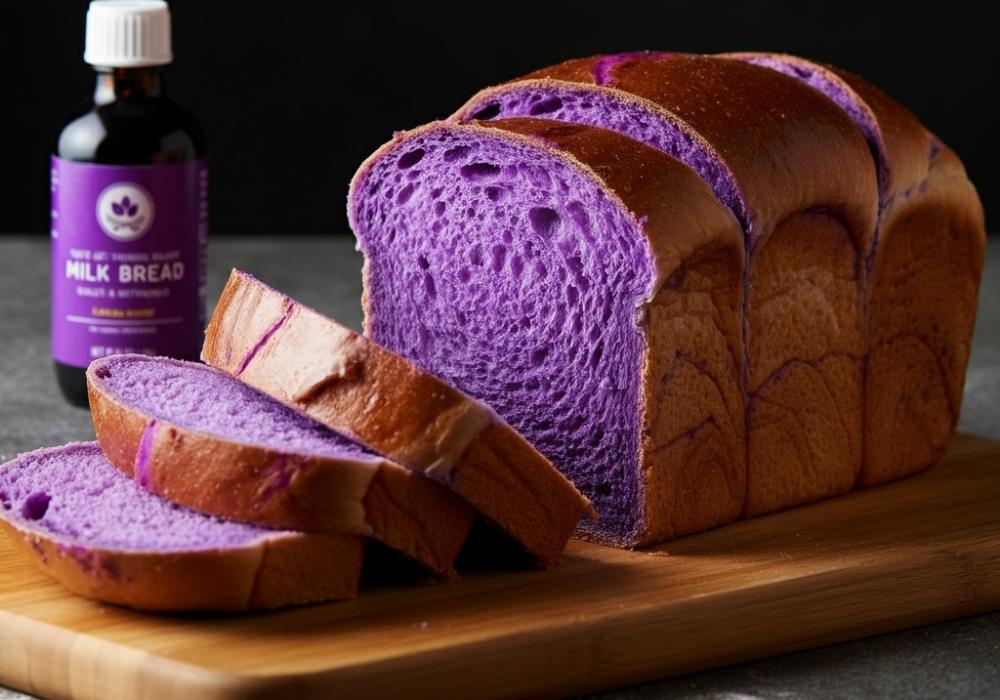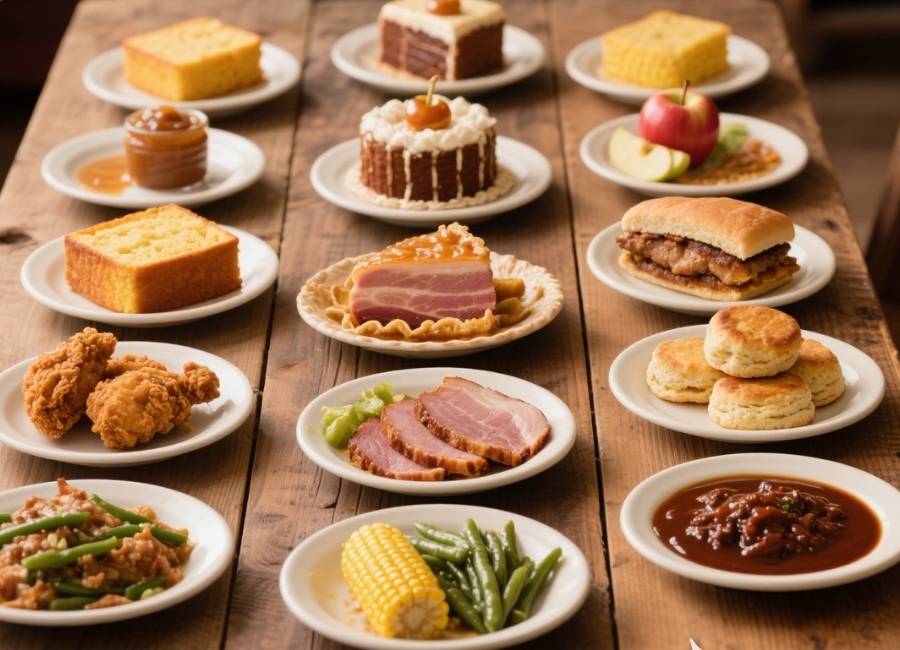Milk bread, known for its soft, fluffy texture and slightly sweet flavor, has become a cherished staple for bakers worldwide. But what if you’re looking to add a unique twist, like the vibrant purple and subtly sweet flavor of ube? Can you incorporate Ube extract into a traditional milk bread recipe?
The answer is an enthusiastic yes! However, adding ube extract changes more than just the flavor, so you must tweak your recipe carefully for the best results. Whether you’re curious about the science behind it or eager to experiment in your kitchen, this guide will walk you through everything you need to know about using ube extract in milk bread.
What Is Ube Extract and Why Use It?
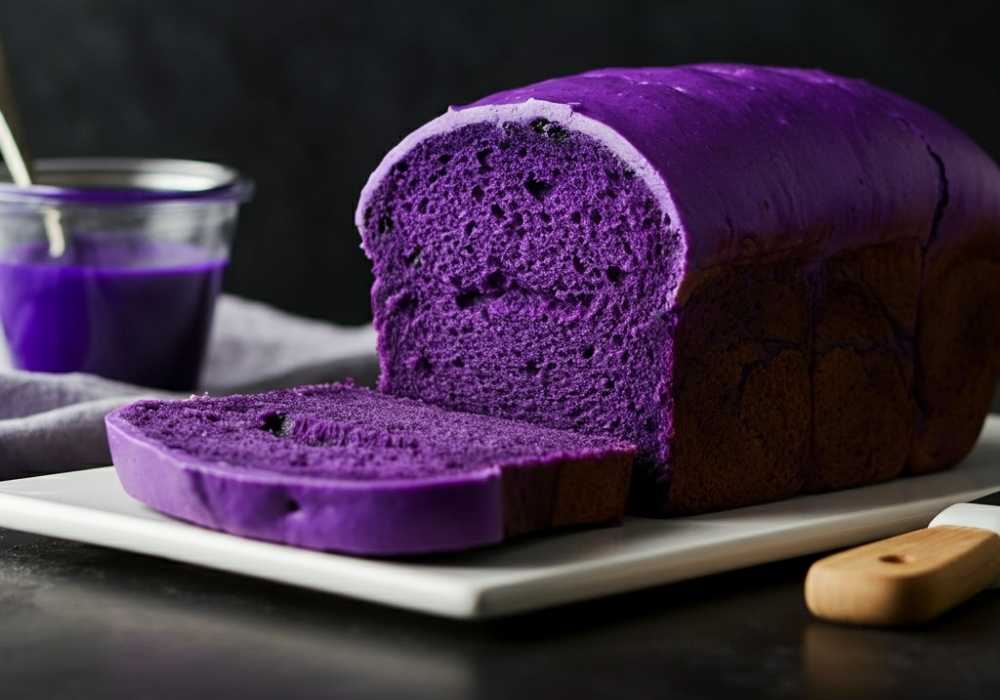
Before we jump into the process, let’s clarify what ube extract is and why it’s such a fantastic addition to milk bread.
What Is Ube Extract?
Ube is a purple yam commonly used in Filipino cuisine. Its extract is a concentrated flavor from ube, offering the yam’s signature nutty and subtly sweet taste and its vivid purple hue. You can find ube extract in bottled form, often added to desserts like cakes, cheesecakes, and ice creams.
Why Add It to Milk Bread?
Adding ube extract to milk bread transforms the classic recipe into a visually stunning and flavor-packed loaf. Here’s what makes ube extract worth trying:
Color: Ube extract gives bread a striking purple color, making it both Instagram-worthy and eye-catching.
Flavor: It adds a distinct, nutty sweetness with vanilla-like undertones, enhancing the bread’s natural taste without overpowering it.
Versatility: Ube-flavored milk bread can be enjoyed plain, toasted, or paired with a variety of spreads, such as butter, cream cheese, or coconut jam.
Now that you know the “why,” let’s move on to the “how.”
Benefits and Challenges of Using Ube Extract
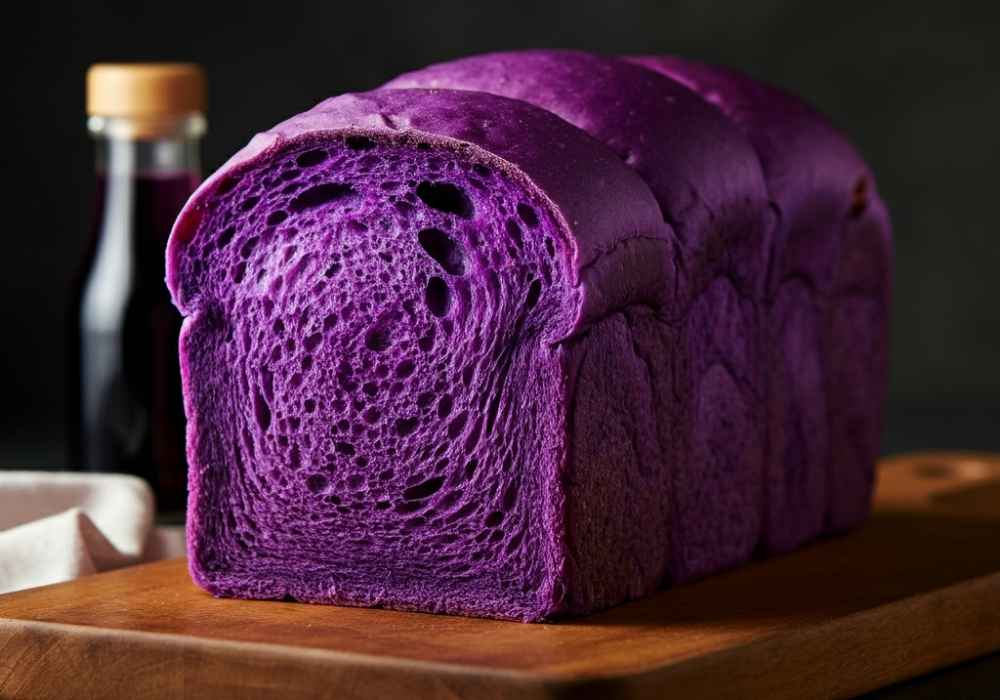
Baking with ube extract has its perks, but it’s essential to understand the challenges to ensure your milk bread turns out perfectly.
Benefits
Flavor Elevation: Ube extract adds a unique sweetness and depth of flavor that plain milk bread lacks.
Creative Appeal: The bright purple makes for a striking loaf, exciting for special occasions or fun.
Healthtive: Though subtle, ube contains antioxidants and vitamins—a small nutritional bonus!
Challenges
Moisture Balance: Ube extract is a liquid, so adjust the recipe’s hydration to prevent overly wet dough.
Subtle Flavor: Some brands of ube extract might provide more color than flavor. To intensify the taste, you may need to adjust or combine the amount with other flavoring agents, like coconut milk.
Baking Time: The color of the dough can make it harder to judge when the crust is perfectly baked.
Knowing these advantages and limitations will help you plan your recipe adjustments more effectively.
How to Add Ube Extract to Milk Bread: Step-by-Step Guide
Ingredients You’ll Need
Here’s a quick list of ingredients to make ube milk bread.
- 3 cups bread flour
- 2 teaspoons instant yeast
- 2 tablespoons sugar
- 1 teaspoon salt
- 1 cup warm milk
- 1 large egg
- 3 tablespoons unsalted butter (softened)
- 3 teaspoons ube extract
- Optional: 2-3 drops of purple food coloring (for a more vibrant color)
Here’s how to successfully incorporate the ube extract into your recipe.
Step 1: Adjust Liquid Ratios
Ube extract is concentrated, but because it’s a liquid, it will add a small amount of moisture to your dough. To account for this added liquid, increase your recipe’s milk by about 2-3 teaspoons to succeed; you can gradually adjust by adding more milk during mixing.
Step 2: Mix and Knead the Dough
Combine your dry ingredients (flour, yeast, sugar, and salt) in one bowl and your wet ingredients (ube extract, egg, and adjusted milk amount) in another. Slowly incorporate the wet ingredients into the dry mixture. Knead the dough until it’s soft, elastic, and slightly sticky. You can knead by hand or use a stand mixer.
Expert Tip: If you want a more vivid purple color, add a few drops of purple food coloring to the wet mixture now.
Step 3: Incorporate Butter Last
Add your softened butter during the final stages of kneading. This ensures the fat blends smoothly into the dough.
Step 4: First Rise
Place the dough in a greased bowl, cover it with plastic wrap or a damp cloth, and allow it to rise warmly for about 1-2 hours or until it doubles.
Step 5: Shape the Dough
Once the dough has risen, punch it down softly to release air. Shape it into a loaf or divide it into smaller portions for rolls. Place the shaped dough in your chosen baking pan.
Step 6: Second Rise
Cover the shaped dough and allow it to rise again for about 30-45 minutes or until it has puffed up slightly.
Step 7: Bake
Bake the dough in a preheated oven at 350°F (175°C) for 25-30 minutes. Watch the color of the crust—purple dough can make it harder to judge browning. For accuracy, use an instant-read thermometer; the bread is done when the internal temperature reads 190°F.
Step 8: Cool and Enjoy
Allow the bread to cool completely before slicing. Serve plain, or get creative with cream cheese or coconut jam spreads.
Troubleshooting Tips
Flat or Dense Bread: Double-check your yeast’s expiration date or ensure your water isn’t too hot—it should be warm, not boiling.
Overpowering Flavor: If the ube flavor is too strong for your taste, reduce the extract to 2 teaspoons and include other complementary ingredients, like vanilla or almond extract.
Faded Color: Is the color not vibrant enough? A few drops of food coloring can enhance the purple hue without affecting the taste.
Turn Your Bread into a Masterpiece
Baking is as much an art as a science, so don’t be afraid to customize the recipe to match your preferences. You could even experiment by adding coconut cream or a crumb topping to elevate your loaf further.
If you try this recipe, we’d love to see your creations! Share photos of your ube milk bread on social media and tag us at [@YourHandle]. And if you’re ready to take your bread-making skills to the next level, browse our collection of advanced bread recipes.
